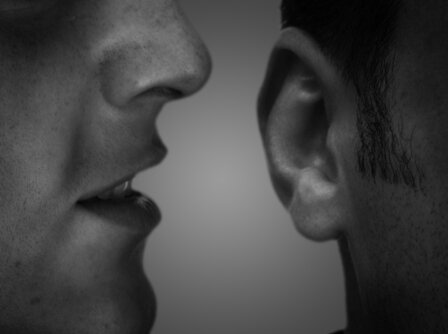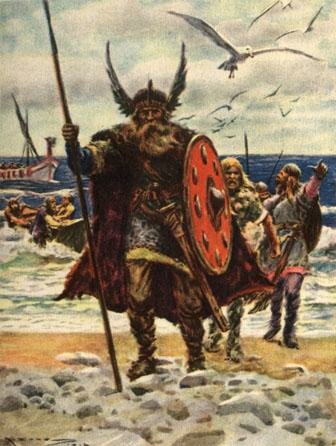Top 10 Interesting Psychology Theories
Suggested by SMSModern psychology has redefined the way we look at the human brain. We understand today that all of human behavior, motivation and personality stems from the foundation our brain establishes from the moment we exist. The world around us and how we react to it defines modern psychology. The human brain is the most complex organ in the animal world, and psychology seeks to understand why it works the way it does. Understanding the intricacies of the human brain is the first step to helping those with psychological disorders and problems. Plus, understanding our brain is very interesting!
Modern psychology has many different ideas of how our development, personality, cognition and morality is shaped and changes throughout our lives. Below are some of the most interesting and important theories of psychology that are sure to have impacted your life without you even knowing it.
10. Classical Conditioning

One of the fundamental theories of psychology is the idea of “classical conditioning.” Ivan Pavlov, one of founding fathers of behaviorism, discovered classical conditioning when he noticed his test animals were associating certain environmental cues with physical reactions. Pavlov discovered that dogs in his laboratory would begin salivating when lab workers dressed in white lab coats walked into the room. Tying two situations together, Pavlov theorized that since the white-coat lab workers fed the dogs, that perhaps the dogs were associating the white lab coats with food and therefore salivating as if they had a giant steak in front of them.
To test this theory, Pavlov designed an experiment with his lab dogs. Instead of using white coat lab workers, Pavlov would set a metronome off right before feeding times. After a few trials, dogs would begin to salivate every time they heard the metronome. The resulting theory, classical conditioning, was then born.
Academically, classical conditioning is described when a neutral stimulus (in Pavlov’s case, a metronome) is suddenly capable of producing a stimulatory response (a dog salivating), also known as a conditioned response. At this point, the neutral stimulus becomes a conditioned stimulus and can become quite powerful.
Today, behaviorism’s classical conditioning is used in all sorts of training programs. The military uses this conditioning when training troops for urban warfare. Dog trainers use this conditioning with clickers when trying to stop or encourage canine reactions. Classical conditioning is an important training component of many everyday occurrences.
9. Operant Conditioning

Another behaviorism theory that’s shaped the modern world is the idea of “operant conditioning.” As Pavlov was investigating classical conditioning, another behaviorist, B.F. Skinner, was investigating how punishment and reward was a powerful motivator in behavioral conditioning. B.F. Skinner was a pure behaviorist, believing that almost none of our behavior could be explained by cognition. Instead, B.F. Skinner believed that all behavior was the result of years of learned responses based on rewards and punishment.
B.F. Skinner’s theory suggests that behaviors that we use within our surroundings to generate consequences (good or bad) should be called an “operant.” The consequences we receive on a daily basis based on our operant actions shapes our behavior. If we receive negative feedback to our operant behavior, we tend to decrease that action which cases the negative feedback. Vice versa, if we receive favorable feedback to another operant behavior, then we tend to increase that action.
This form of conditioning is most often used in traditional parenting and in everyday social interactions. When we receive negative feedback from those around us, we tend to adjust our behavior to fit expectations that will reinforce our social goals. Operant conditioning is also used everyday by companies around the world in traditional rewards programs that reinforces better sales or customer service relations. We learn to behave in certain ways based on the positive or negative feedback around us.
8. Theory of Cognitive Development
It’s common knowledge that as children develop into adults, they go through characteristic stages of development. A 3-year-old definitely has different cognitive skills than a 7-year-old and will react very differently to the world around him or her. Jean Piaget, a cognitive psychologist, sought to explain the different stages that children go through to develop full cognitive understanding of the world around them. Piaget further used this to understand how proper parenting can lead to better developed, emotionally stable adults.
Piaget proposed that we begin understanding the world in the form of schemas. A schema is comprised of our knowledge and the process of obtaining that knowledge. It’s the systematic way in which we understand something, such as a “tree” or a “car.” According to Piaget, children develop through schemas in key stages: assimilation, accommodation and finally equilibrium. This process develops and continues throughout the rest of our lives as we are always learning and adapting.
Today many schools use this theory to teach their students. Gradually building upon concepts and facts allows children to fully develop into well-rounded intelligent adults. It also encourages mental development and logical thinking.
7. Triarchic Theory of Intelligence

Robert Sternberg is a cognitive psychologist who approached intelligence and cognitive development in terms of a person’s worldview and surrounding environment. Sternberg created the Triarchic Theory of Intelligence by suggesting that intelligence is our adaptation to the world relevant to our lives through mental activity. Sternberg continued cognitive psychology’s idea that intelligence is multi-factorial, but also believed that intelligence could be shaped into three primary factors: analytical intelligence, creative intelligence and practical intelligence. All factors involve the integration of past experiences into solving new problems and novel situations in our surrounding environment.
6. Multiple Intelligences Cognitive Theories

Much in line with Sternberg, another cognitive psychologist named Howard Gardner further reinforced that intelligence cannot be construed to one single factor. Howard Gardner is the father of Multiple Intelligences theory. Gardner proposes that intelligence can be divided into eight very unique categories that are shaped by our surrounding environment (much like Sternberg). Culture and past experiences shape which category is most highly valued and sought after in our everyday life. As children, we develop each category based on external culture and our natural abilities.
The eight categories proposed by Gardner are Visual-spatial Intelligence, Verbal-linguistic Intelligence, Bodily-kinesthetic Intelligence, Logical-mathematical Intelligence, Interpersonal Intelligence, Musical Intelligence, Intra-personal Intelligence and Naturalistic Intelligence. Today, many human resource departments use this theory to ensure a well-rounded approach to employee management and development. Well-supported adults who feel fulfilled in each category are reported to be the happiest and most balanced.
5. Freud’s Theory of Psychosexual Development

Probably the most popular psychological theory is the Psychosexual Development Theory proposed by Sigmund Freud to explain childhood development and later adult behavior and personality. Freud’s developmental theory is perhaps one of the most important developmental theories still impacting modern psychology today.
Freud was one of the first modern psychologists to approach development from a psychological and biological perspective. By age five, Freud proposes that fundamental parts of one’s personality are already developed, either successfully or non-successfully. Freud also was the first to suggest that unresolved phased leads to a lifetime struggle to resolve conflict within that phase. To Freud, the energy that drives development is the libido, also known as psychosexual energy.
Freud’s stages of development are the oral stage, anal stage, phallic stage, latent stage and finally, genital stage. Successful resolution at all stages leads to a warm, well-balanced adult capable of having fulfilling mentally stimulating relationships. Any unresolved conflict leaves people in the stage they experienced conflict and leads to socio-psychological consequences.
4. Kohlberg’s Theory of Moral Development

A unique human trait in our social development is the fact that we experience morality. We have a common set of social expectations and experience guilt when we go against our pre-identified expectations. But how do we develop these moral expectations? Are there stages?
Using Piaget’s theory of cognitive development, Lawrence Kohlberg considered the idea that perhaps morality also develops through a process from childhood. As a result, Kohlberg came up with “Kohlberg’s Theory of Moral Development.” According to Kohlberg, there are six major stages of moral development. Not everyone reaches all six stages; rather, many adults end up only reaching stage three or four while a few may reach stage six. Moral development is spurred by cultural expectations and continuing life experience.
According to Kolhberg, the six stages of moral development are Obedience and Punishment, Individualism and Exchange, Interpersonal Relationships, Maintaining Social Order, Social Contract and Individual Rights and finally, Universal Principles. Kolhberg theorizes that the highest form of morality recognizes universal rights and internalized principles of justice that are followed despite regional laws or expectations.
3. Maslow’s Hierarchy of Needs

A well-known humanist, Abraham Maslow, sought to understand how people were motivated throughout their lives. Maslow theorized that humans seek to satisfy their needs and wants in a certain order. Basic needs and wants are always satisfied first and left unfulfilled, people won’t move up the “hierarchy of needs.” Today, Maslow’s theory has become very popular in business planning and human resources.
Maslow visualized human needs as a pyramid, or a hierarchy, of needs. At the bottom of the pyramid, you have needs such as food and water. These are known as basic physiological needs. These needs at the bottom of the pyramid must be fulfilled before needs above them can be addressed.
The next levels, going up, are security needs, social needs, esteem needs and finally, self-actualization needs. It’s important to note that the pyramid is a two-way street. At any given point in our lives, we may be at different levels of fulfillment. Security needs include the need for safety and one’s assurance of safety. Social needs include friendships, romance and community involvement. Esteem needs includes one’s perception of self-worth and impact on the surrounding environment (socially and physically).
Self-actualization is the top of the triangle, and it’s important to note that most adults never reach this stage. At this stage, all needs have been fully met and the person is free to fulfill their true perceived calling. Self-actualized people are also fully accepting of the world around them and they seek to improve the global environment- not just their own small world.
2. Murray’s Psychogenic Needs Theory

Another popular psychologist who fed from Maslow’s ideas of needs and fulfillment is Henry Murray. Instead of viewing needs as a holistic pyramid-structure like Maslow, Murray viewed needs as falling into key categories of primary needs and secondary needs. Murray also went further to tie personality into these needs. Murray theorized that personality was actually divided by these needs into motives and behaviors to fulfill them by our reactions in specific situations.
Primary needs, according to Murray, are the basic needs that we need to survive and thrive. These needs include oxygen, food, shelter and water. Secondary needs are primarily psychological and contribute to our thriving. These needs are things such as social interaction, achievement and nurturing.
A critical element of Murray’s theory is that each individual has a different level of need in each category. Murray broke down these needs into 24 key components, each of which can be fulfilled or unfulfilled at the same time. Instead of needs being broken down into stages (as in Maslow’s theory), Murray theorized that our need fulfillment is fluid, just like our personalities. The fulfillment of these needs will change, situation-dependent, and much of our behavior and motivation lies in fulfilling these needs to the maximum.
1. Triangular Theory of Love

One of the most interesting fields in modern psychology is the study of love. Love is one of the most powerful emotions in human history. Love has spurred wars, peace and history itself.
Sternberg, while popular for his Triarchic Theory of Intelligence, also applied a triangular theory to love. To Sternberg, love is comprised of three components: intimacy, passion and commitment. Love itself is comprised of a combination of these components. The longest enduring kind of love is when all three components are present at once. This is also the rarest kind of love.
Psychology is a very interesting field of study because it seeks to discover how we define ourselves and why we interact with the world the way we do. Understanding these things can help us become well-balanced emotionally healthy adults who live life to the max.










